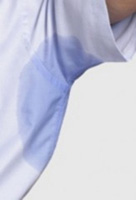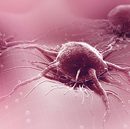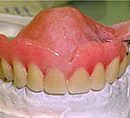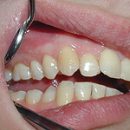You do not like what your nails look like? They are thick or brittle? Caution: It can be nail fungus or onychomicosis. How to verify this ailment, read in this article.
Content
Nails - a very important component of the image of female beauty. But so that the marks become another weapon in the opposite sex selection arsenal, they will have to work hard on them.
Ideally, healthy nails should be solid, smooth, matte shiny, without specks, pinkished color. Any change in their appearance - a signal that there are health problems. In this case, the reason itself should be eliminated. Nails have acquired a bluish shade - problems with blood circulation, the wishes - the liver is stitched, there were white specks - the body lacks calcium. A, it happens, the reason for the disgusting appearance of the nails - struck their fungus or onychomicosis. How to recognize this ailment?
 Usually, the changes of nails during fungal disease have three main manifestations:
Usually, the changes of nails during fungal disease have three main manifestations:
- Changing the color of nails,
- Nail thickening;
- Cross and destruction of nails.
Changes in color of nails when damaged fungus
Changing the color of the nail with fungal disease. Fungus is under the nail plate. The usual color of healthy nails gives the base of the nail, translucent through the transparent nail plate. With onychomicosis, nail can become white, gray, yellow, brown different shades, sometimes black or green.
First of all, a nail plate or becomes an opaque, or between it and the base (lies) of the nail appears a gap in which the pathogens themselves are arranged by the fungi themselves, as well as other microbes, lunned skin cells or other substances. This, basically, explains changes in the color of nails during fungal diseases.
Thickening (fungal subcast hyperkeratosis)
The fungus causes the nail thickening (subnumber hyperkeratosis). Observed during fungal diseases thickening nail, as a rule, caused by thickening not so much nail plate, how many nail bed.
Subcast Hyperkeratosis - Strengthened Nail Lodge Election - is a reaction to the introduction of fungus. Horny masses in the nail increase over time and impede the effective treatment of onychomicoses.
Cross and destruction of nails
Dystrophic changes and destruction of the nail of the fungus with a long non-long onichomykosis. Over time, the incredible fungal disease leads to the introduction of the fungus in the entire thickness of the nail plate and to its bundle. The fungus penetrates into different nail departments, it leads to dystrophic changes.
Crossing the nail, that is, the destruction of the nail plate from the free edge can also occur at the beginning of a fungal infection. As a rule, the destruction of the nail is observed simultaneously with thickening.
Other changes of nails during fungal infection
Fungal diseases of nails have many different manifestations that can also be described in different ways. For example, you can pay attention to the change in the surface of the nail, its deformation, the state of the surrounding skin.
Millions of cases observed annually around the world create a kind of picture saturated with many shades of the disease. Therefore, show all pictures typical of onychomicosis, comparing with which you can say if a person has a nail fungus, it is impossible.
Diagnosis On the appearance of nails can only a doctor, and it will have to «consult» With laboratory.









